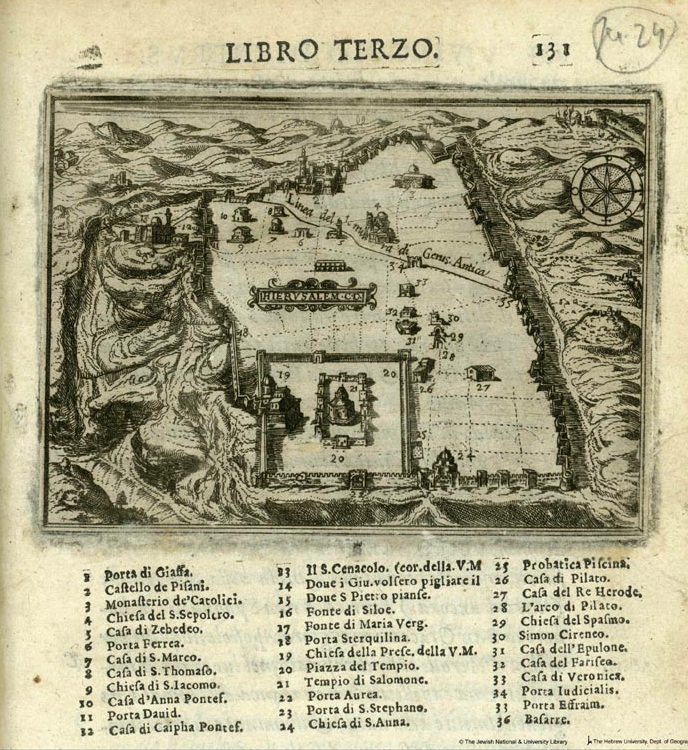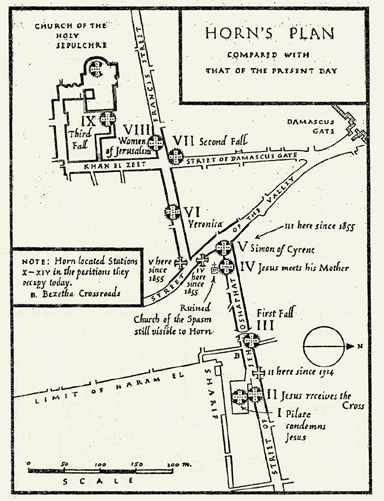The praetorium of Pilate and the House of Herod
And Herod with his soldiers treated him with contempt and mocked him. Then, arraying him in splendid clothing, he sent him back to Pilate.
Lc, XXIII, 4-12
The Terra Sancta Museum and the places of Jesus’ trail
The archaeological section at the Monastery of the Flagellation opens in an area that is very important to Christianity: ancient tradition claims this as the location of the praetorium of Pilate.
St. John the Evangelist wrote that Pilate, who was at the praetorium of Jerusalem for the Jewish Passover, commanded Jesus be scourged; after an attempt to release Jesus, Pilate handed him over to the crowd demanding his crucifixion.
According to the memory of the medieval pilgrims also the House of Herod was to be found in this area. This tradition has no historical confirmation and was progressively forgotten in modern age starting from 19th century. However, not only pilgrims’s accounts but also several maps of the Via Dolorosa (such as the one of Zallardo, 1595) show that the palace of Pilate and that of Herod were located in the area of the Flagellation Monastery.
Learn more:
-
- The Latin couplet Loca Sancta in stacionibus Jerusalem (reported in the itinerary of W. Wey, 15th century) was composed in order to remember by heart various places of the typical itinerary of the medieval pilgrims, such as the house of Pilate and the one of Herod. See also The Itineraries of William Wey, Fellow of Eton College. to Jerusalem, A.d. 1458 and A.d. 1462. From the Original Manuscript in the Bodleian Library
- The complete map of the Holy Land showing the itinerary of W. Wey
- Il devotissimo Viaggio Di Gierusalemme: Fatto, e descritto in sei libri by Giovanni Zuallardo and other authors (1595). The map that describes the location of the houses of Herod and Pilate is on page 154.
- E. Alliata ofm, Le Ancient streets of Jerusalem (2010), in Italian
- E. Alliata ofm, Christian topography in Palestine – Jerusalem and surroundings





